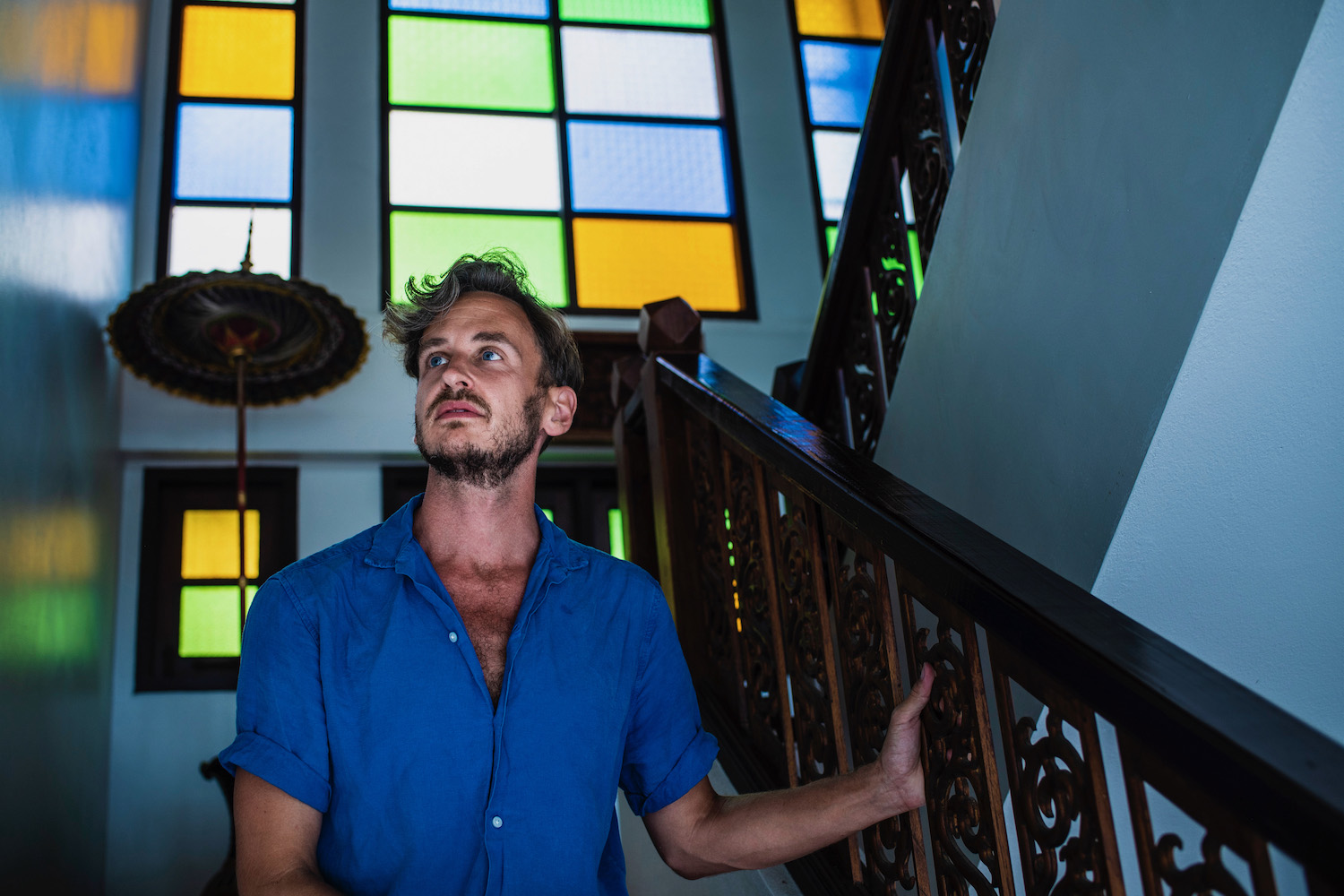I took a taxi to Chiang Mai today. Having visited an elephant “sanctuary” (spoiler alert: it was a zoo) north of Lampang this morning, it made sense logistically and price-wise to complete my journey via private car.
It felt fancy, until the anxiety kicked in: Chiang Mai is never a city I’ve fully understood. And something, probably the clouds blanketing the sky during what was supposed to have been the dry season, told me this time wouldn’t be any different.
No one gave the owner of iLanna House, where I’d stayed before and chose this time almost by default, the memo.
“You can walk around the corner to the next hotel and get a songthaew,” he explained apologetically, and unprompted, regarding my desire to get up to Doi Suthep later in the afternoon. “I’m sorry my daughter quoted you that high price for a taxi. You only have to pay it if you need AC—you seem like you enjoy the fresh air.”
He was right: I’d have taken one of the iconic red pickups all the way from Lampang if that had been an option.
Armed with this knowledge—or really reminded of it, since this wasn’t my first time at the Chiang Mai rodeo—I spent the next 30 minutes or so photographing (and photographing myself in) the hotel’s stunning stairway. The steps and banister were teak; Thai stained glass panels provided four unmistakable hues of backlight.
Certainly, this space insulated my simmering worry that I would once again fail to fully grasp Chiang Mai.
Right as I was wrapping up, the owner chimed in. “Do you need me to turn on the lamp?”
“No,” I said with certainty. “The natural light is perfect.”
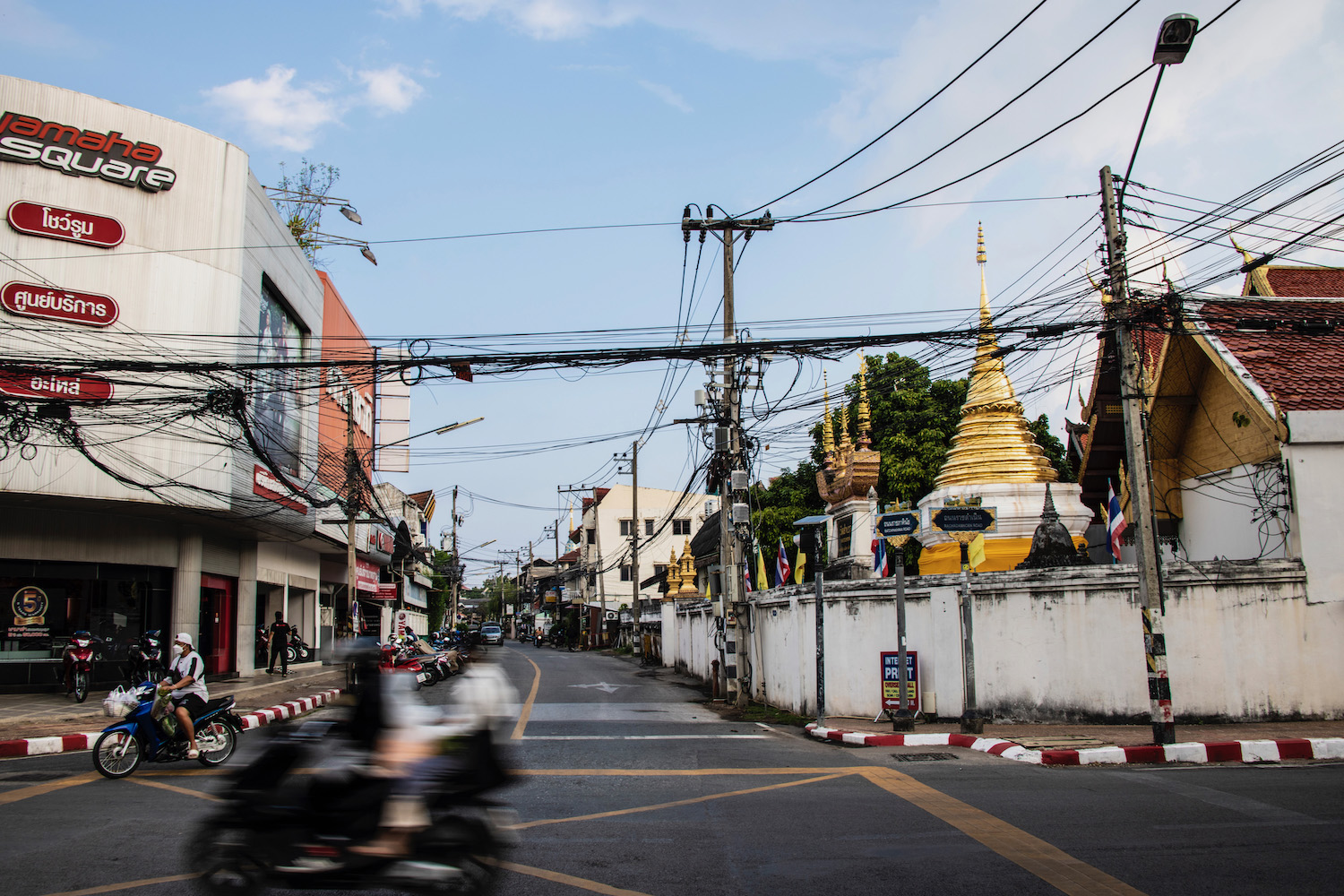
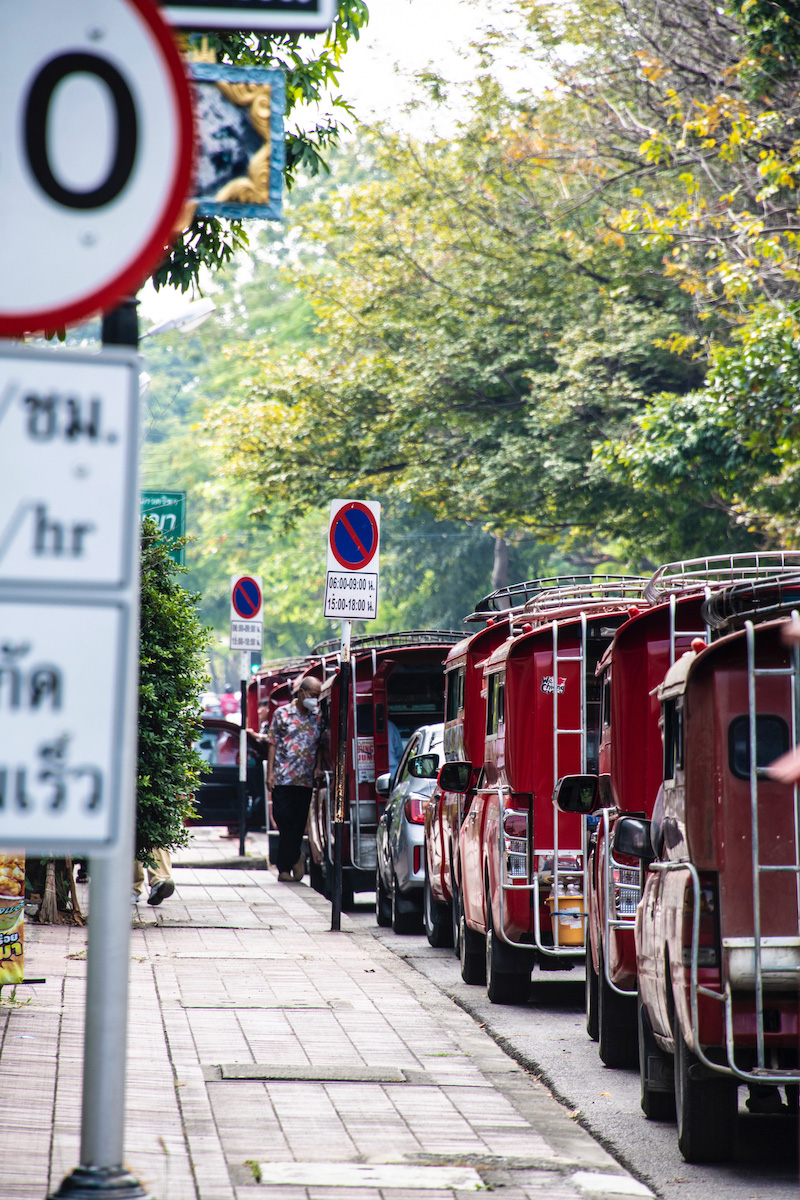
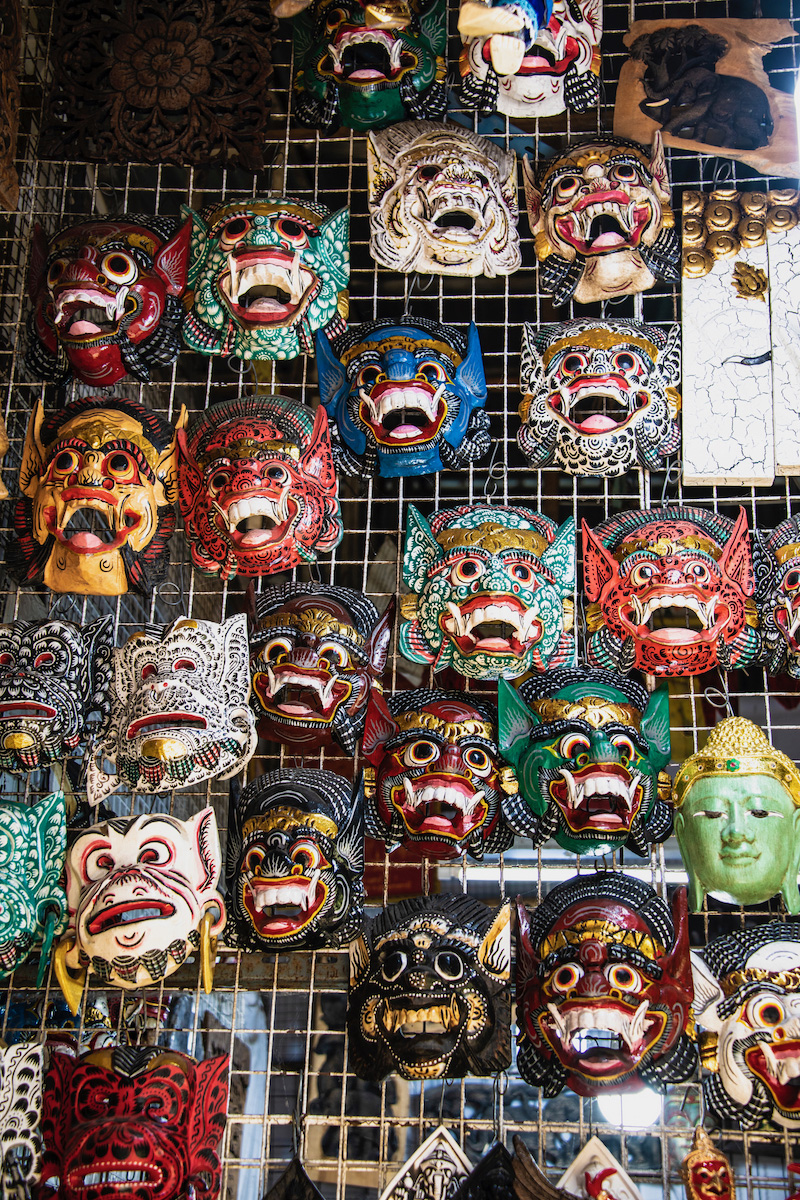
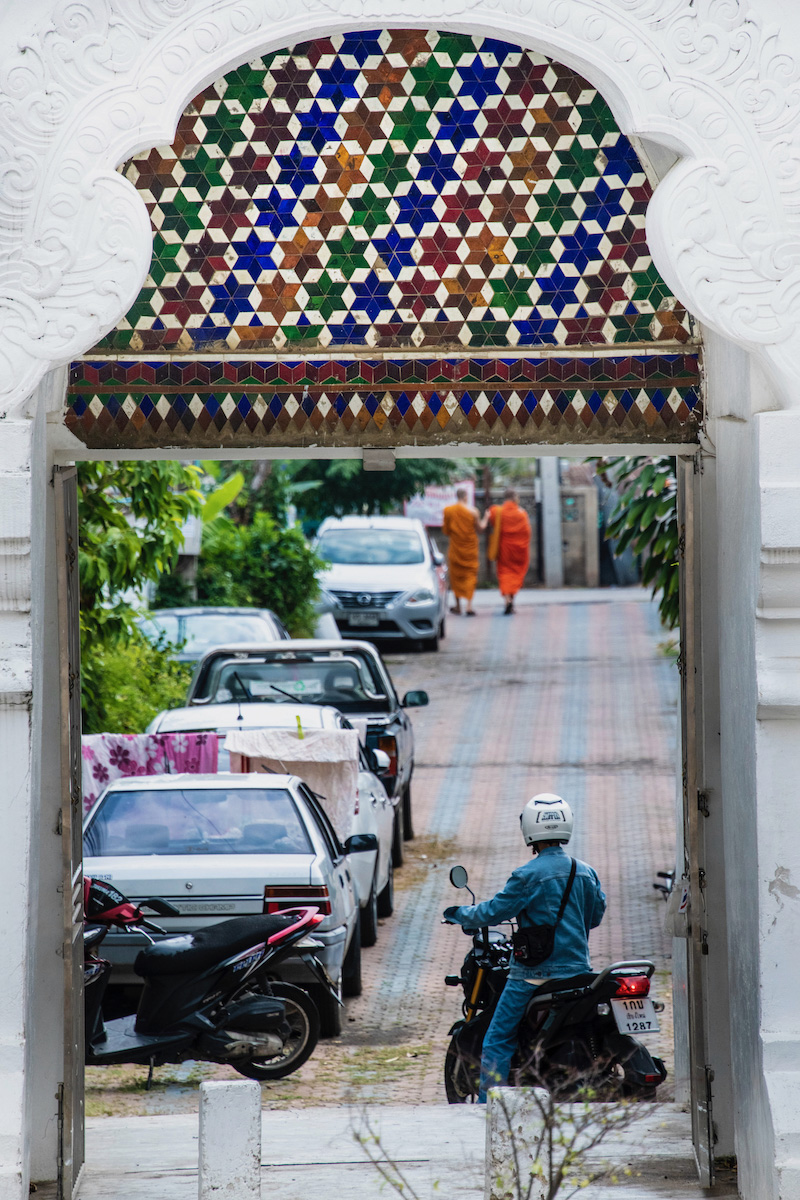
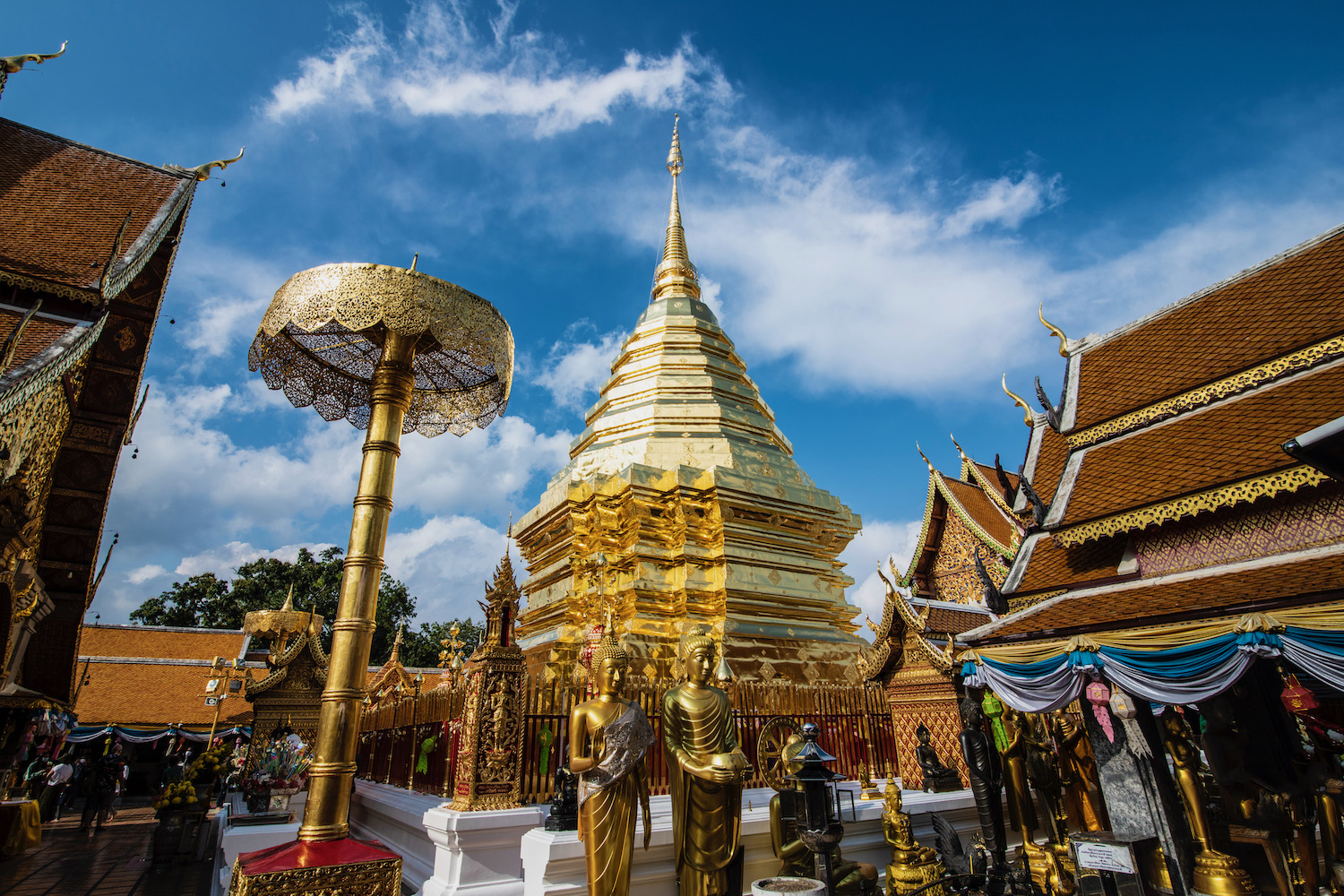
Complicating my perception of Chiang Mai this time around is that the city, I assume because of reasons related to Covid, is utterly empty. In spite of this, the first two people I saw walking on the street were farang. Specifically two Israelis, who looked (though did not smell) as if they’d been hiking for days or weeks; they were wearing those obnoxious cargo pants that zip off into cargo shorts.
As I passed them I peered into the parking lot of Wat Methang, where a trio of soi dogs laid at the feet of a group of local men, who were chatting and smoking, each with his feet up on the plastic chair across from the one he was sitting on. Although the latter image—maybe without the cigarettes—is what draws foreigners to Chiang Mai, the former is much closer to what we usually get.
To be sure, all the local restaurants were closed by the time I made my way out of the hotel, leaving me with no choice but to eat in an establishment purpose-built for non-locals. The khao soi, for its part, was delicious, as was the Singaporean Chinese man whose thick thighs and ass could’ve cracked open the chicken bones I sucked on after I finished sipping the spicy curry broth.
My belly somewhat full, I made my way back to the western flank of the Old City wall, where as my hotel owner had told me a line of songthaew was waiting for me. I felt hesitant, and not just because I neglected to haggle the driver down to a fair price out of pity for him: The expression on his face told me he hadn’t commanded full fare in a while. What was 200 extra Baht,besides a 33% markup?
No, it was my realization that the clouds hanging over me on my inbound journey had yet to clear. It seemed unlikely that I’d be able to get the Doi Suthep shot I’d been waiting years for: The shimmering gold of the famous temple’s pagoda contrasted against a crisp, cobalt sky. The third time, in this particular instance, would not be a charm.
Yet I was on my way, and as the pickup rollicked westward toward the mountain, I made the mistake of doom-swiping through Google Weather: It seemed that in addition to today being cloudy, tomorrow would actually be rainy. So much for the “dry season!” This says nothing about the thick layer of monlapit that was blanketing all of The North; I’d seen it while landing in Lampang 48 hours earlier.
The good news is that my preoccupation passed the time quickly. By the time I lifted my head, busy (in terms of aesthetic, not customers) street vendors made it clear that we had nearly arrived to the temple. Somewhat unenthusiastically, I lifted myself out of the bed and up the iconic Naga Stairs, adorned with twin images of a bejewel Phayanak, one on either side.
That fucking snake again, I thought back on having seen it both in Phuket and on Koh Pha Ngan.
As I had done during the ride, I kept my head down for most of the hundreds of steps leading to the top; I didn’t stop en route, which amused the huffing and puffing older women on either side of me.
Both of these facts contribute to why I felt almost dizzy upon reaching the top: The sky was blue and almost cloudless; the 14th-century stupa and the ornate, gilded umbrellas that surrounded it on either side were gleaming in the extremely bright sunlight.
I wasn’t sure how this had happened, meteorologically, but I was thankful: It allowed me to kick the can of my nagging narrative—that I just don’t like Chiang Mai very much and probably never will—down the road, even if I still wonder if I’ll ever be able to jettison it completely.
I realize how this must sound, particularly if you never read my original blog, or tales of act-of-god born disappointments I faced in Mexico City, Taiwan and amid the lavender fields of Hokkaido. It’s a very base response on my part: I change my mindset after I get what I want, not the other way around.
It’s the antithesis to the suggestion once offered by Sheryl Crow (who, random fact, taught music at my elementary school a few years before started). I’m gonna soak up the sun, and only after doing so will want what I’ve got.
Indeed, the rest of the day proved more of a mixed bag. Clouds had crept back in by the time the driver headed back down the mountain and through Rajapruek Royal Park up to Wat Doi Kham, whose standing Buddha is much less impressive when you stand beneath it than it seemed from the drone shots that advertise it online. Likewise, by the time I got back to the city to see Wat Phra Singh light up, the unrelenting cloud cover had long-since dashed any hopes of a sunset, or anything close to it.
And yet as I walked back to iLanna House, stopping momentarily for my second Khao Soi of the day (this one was better, though boneless), I felt a sense of hopeful curiosity. The oddly-placed hookers who propositioned me just outside the entrance to the guest house left an unsavory taste in my mouth just before I slept, but they couldn’t fully steal my sunshine: Chiang Mai was starting, almost a decade after my first trip here, to make at least a tiny bit of sense to me.
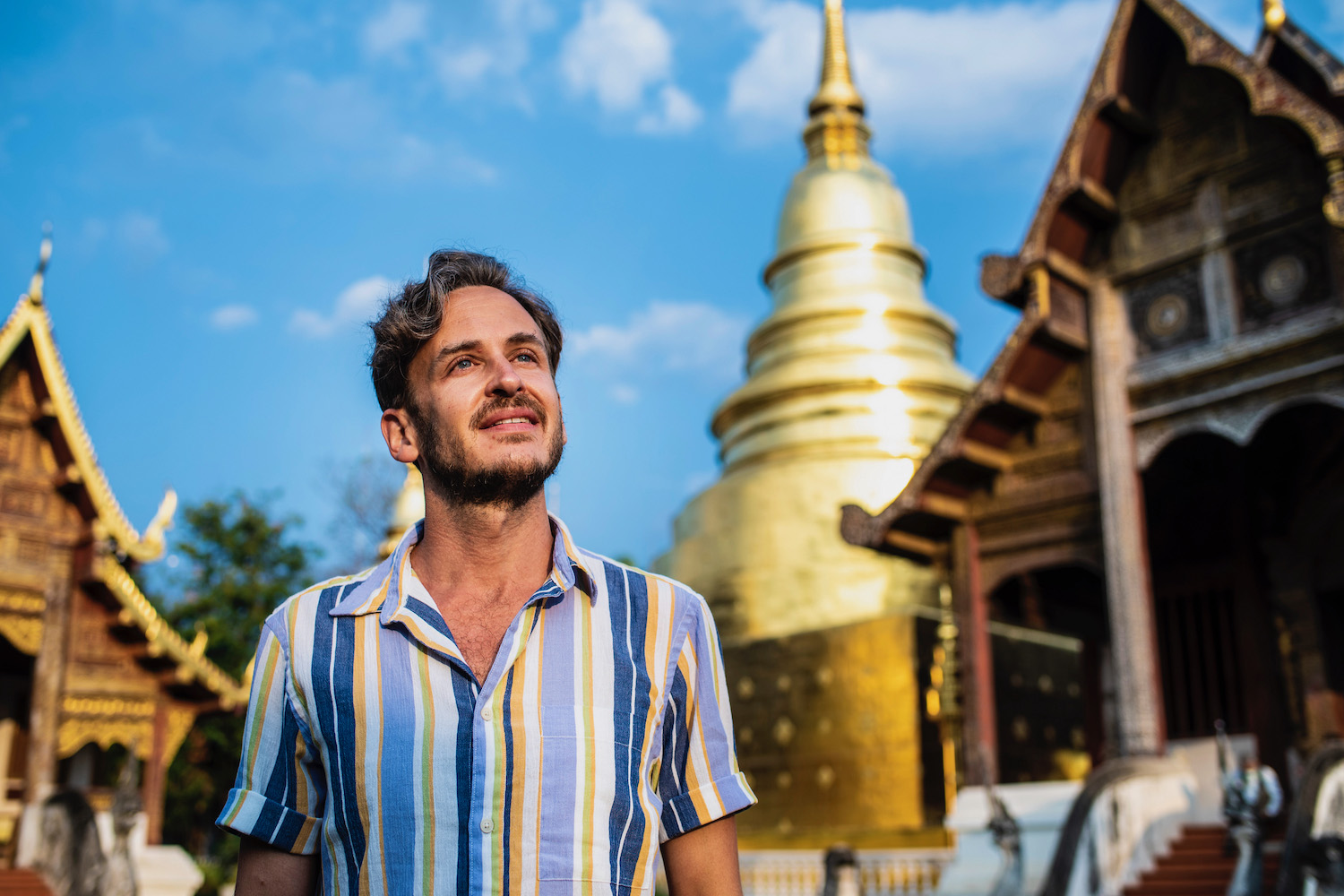
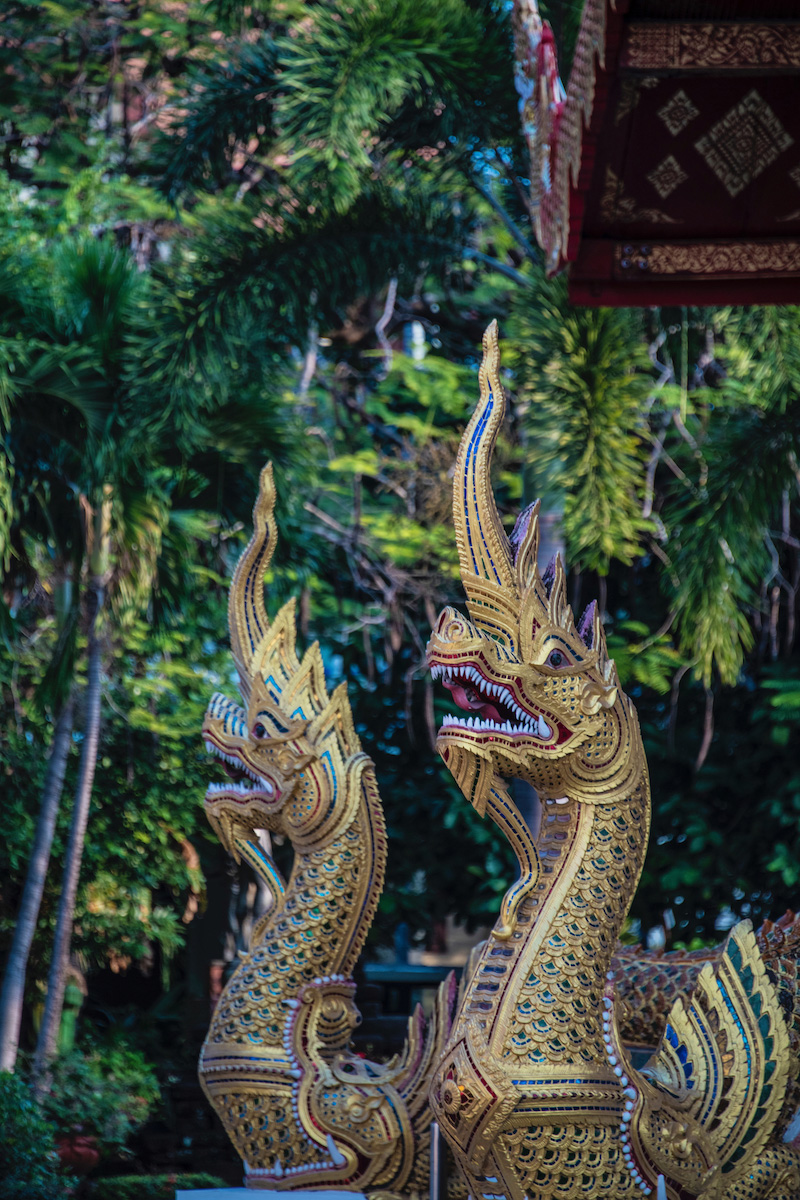
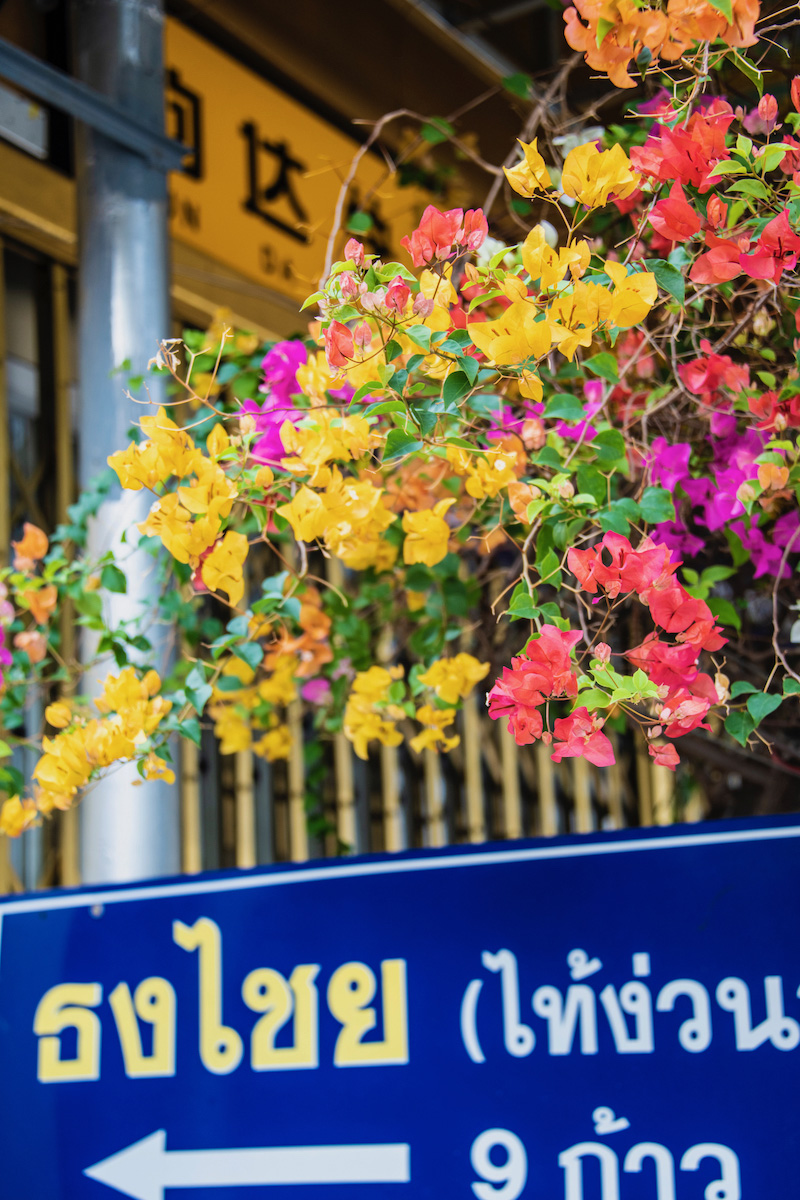
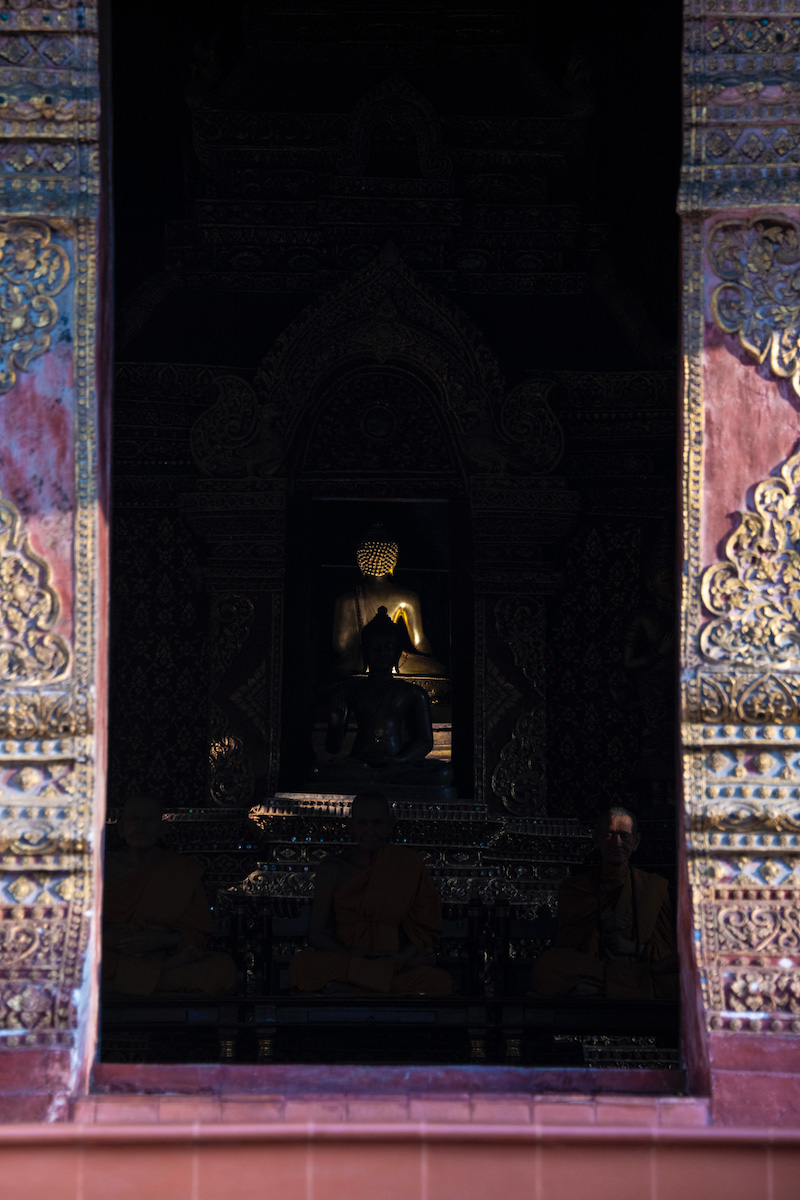
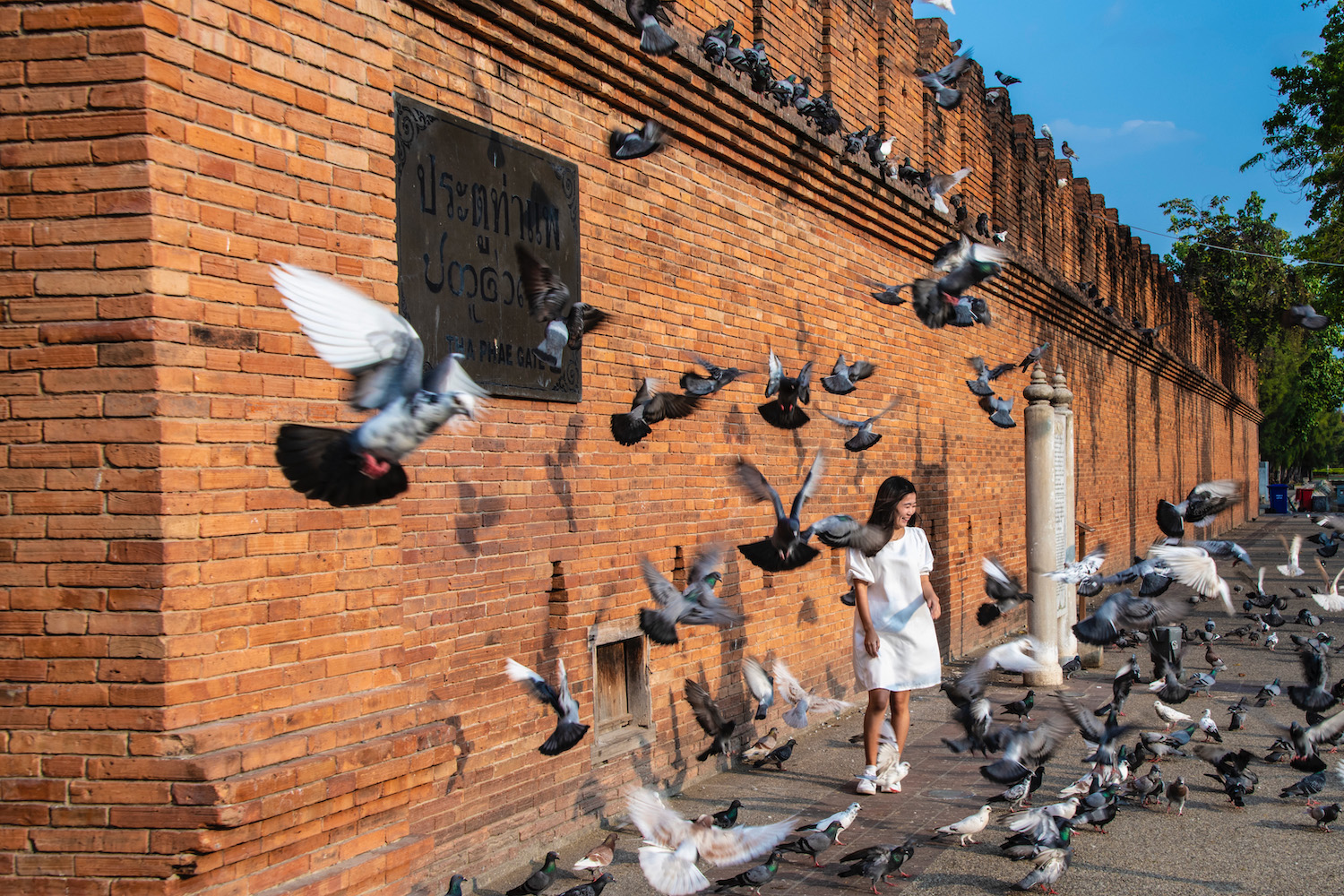
I didn’t want to jinx myself the next morning, so I headed outside at around 7 without checking the weather. To my surprise, yet not quite my delight, there were patches of blue in the sky.
But as I neared Wat Phra Singh—well, as much as you can “near” a place that’s only about five minutes from where you’ve just slept—delight started creeping in. The clouds, it seemed, broke heavily near the eastern horizon; the rising sun was strongly shining through the break. By the time I arrived at the temple, whose gold was positively gleaming when I got there, the light warmed my face in a way I can only describe as beatific.
“Excuse me,” the monk whose path my tripod stood in said, in English, and with a smile on his face. I imagined he would’ve used a different adjective to describe me.
“Khoo thoot,” I told him in Thai, and shot a deferential Wai his way.
He seemed likewise un-bothered when the daily King’s Anthem started blaring out over every speaker in the vicinity; he, like me, continued going about his business, embodying disinterest but not disrespect. For my part, I was fixated on just how closely the contrast of the stupa against the sky mirrored what I had seen the afternoon before at Doi Suthep.
And how predictable, once again, my thought process was: I love Chiang Mai, but only when Chiang Mai first shows me love.
In spite of how vigorously my blood was pumping, there was a genuine chill in the air. It was the first time I’d ever felt such a feeling in Chiang Mai-proper. Previously, the only time I’d shivered outdoors in Thailand was atop Doi Inthanon, the Kingdom’s tallest mountain.
As I walked westward, the clouds seemed to follow me, intensifying the chill and my nervousness in tandem. Arriving at Tha Phae Gate, however, the same good fortune that had followed me onto the grounds of Wat Phra Singh showed itself again: Sun rays pierced the clouds precisely at the moment the gate’s famous pigeons exploded away from the ground.
Being at the gate reminded me that I hadn’t been there—or even really to that part of Chiang Mai, along the eastern frontier of the Old City just before the Mae Ping River—until my very first trip here, way back in 2012, the year world was supposed to have ended. It didn’t end; something about the adventurousness with which I explored Chiang Mai back then did.
“Bird food?” The old woman selling the stuff asked, a glint of desperation in her eye. This morning, only a trio of Thai Muslim women appeared to have bought what she was selling—before Covid she wouldn’t have been able to keep up with the demand.
I shook my head, but passed her a green 20 Baht note anyway. I wish there was a way to make pity buys without the pity, I thought to myself, sighed and began meandering westward through sois and sub-sois toward Wat Chedi Luang, the massive, ruined monolith that sits at the geographical center of Old Chiang Mai.
It’s always difficult for me to imagine the structure in its complete form. It exists on an absolutely huge scale as it is; the idea that something so enormous could’ve been built six or seven hundred years ago and lasted, at least in part, until now, is beyond my comprehension.
This time, at least, I visited the Chedi when the light was shining upon it the right way. Back in 2017, the last time I was here, I’d made the mistake of coming when it was backlit. While this did result in my having taken one of my favorite-ever photos of Chiang Mai—and maybe of Thailand as a whole—there is something to be said about getting things right intentionally instead of accidentally.
I continued my march in the direction of the sun, my ultimate destination Wat Suan Dok (one of the last remaining major temples on my Chiang Mai bucket list). It wasn’t a march; that’s not accurate. Although I wasn’t quite dancing, or even strutting either.
It was more that as the perfect light flooded ever nook and cranny, I felt for the first time—I felt finally—that the urban legend about Chiang Mai being the most beautiful (or at least the most Instagrammable) city in Thailand might have a grain of truth to it.
When I was nearly back to Wat Phra Singh, I noticed a young man sitting on the ground at the intersection. I initially assumed he was a beggar; only when I stopped and struck up a conversation with him did I realized he was an artist, and quite a talented one.
“How much does this one cost?” I asked him in English, holding up a postcard with an ink portrait of the Doi Inthanon pagodas on it.
He smiled, obviously hopeful I would say yes regardless of his answer. “100 Baht,” he declared proudly. This was high above the typical asking price of such a souvenir in Chiang Mai, though far less than someone should’ve paid for something made with such care.
I happily obliged him. His confidence in his art, and to demand his worth—well, closer to his worth than the local market would price his products—deserved affirmation.
We chatted for a moment or two about how long he’d been doing this (just a few months) and whether or not he was in school (he was), although I didn’t want to distract him from selling to other people, even if the crowds at just past 9 were light, even considering the low number of foreigners currently in Chiang Mai.
“Good luck Khun Choop Chao,” I smiled and bid him farewell as I sheathed his art safely in my bag. “I’ll tell all my friends where to find you.”
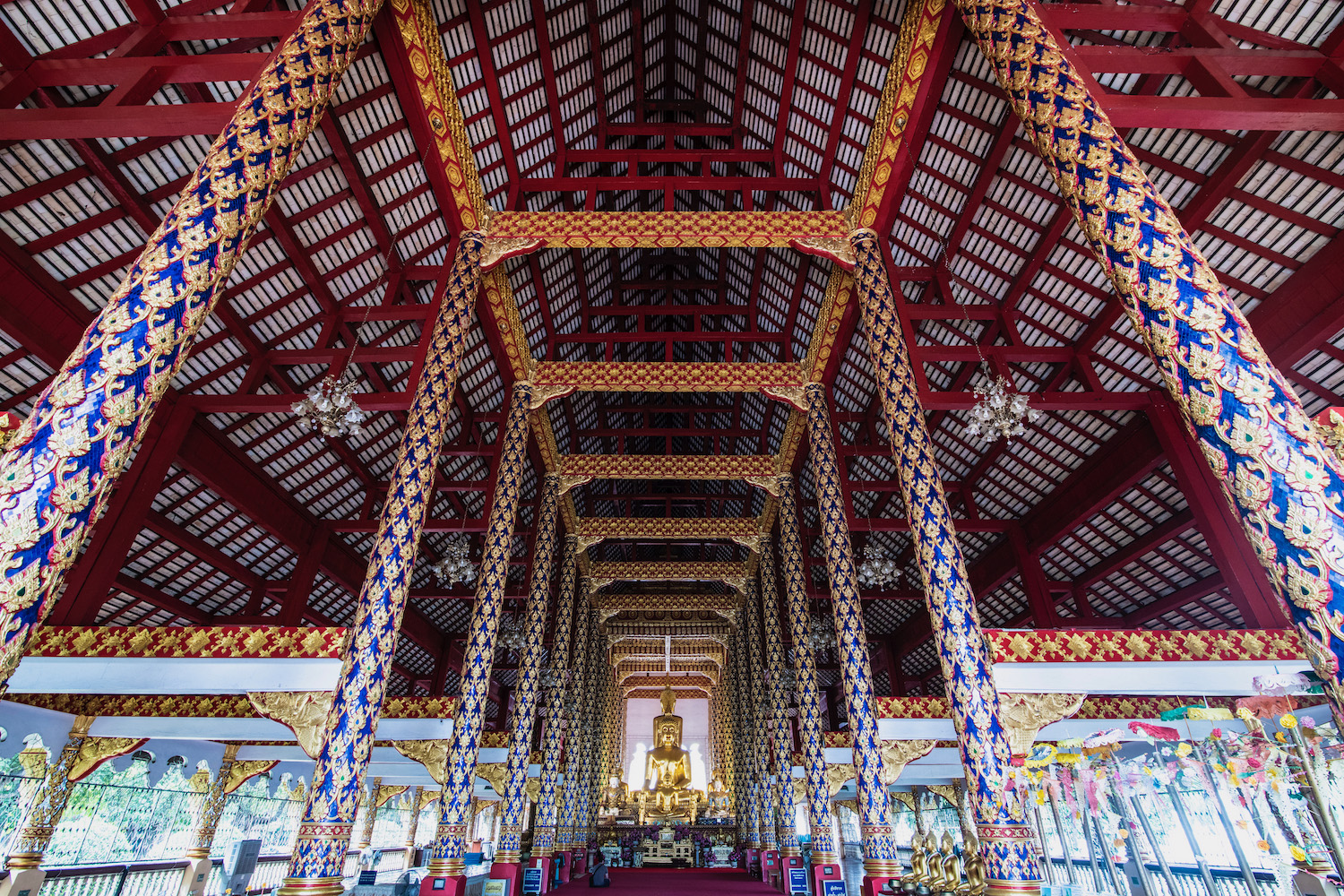
I couldn’t speak Thai the first time I visited Chiang Mai, which gave a mysterious, almost otherworldly air to the name of every temple I learned. My Thai is much worse than it used to be, but now I’m usually able to discern to the meanings of place names. Wat Suan Dok, located 20 minutes (on foot) outside the western Chiang Mai city gate, is the “flower garden” temple.
I mean, it literally is. Kue Na, the Lanna king who ordered the temple built in the late 14th century, had a flower garden on the site where the temple currently stands, which at that time was within its own walled settlement. These days, the only flowers that remain are the bejeweled ones near the top of the temple’s main, golden stupa, which stands high above the dozens of white gravestones that extend northward from it.
After my beautiful morning in the city center, and a short time in my room to decompress, I made the journey here as much to see the temple (which has been high on my Chiang Mai bucket list since at least the last time I was here) as I did to think: The day had begun so well, and so high above my expectations, that I didn’t really know what to do with myself for the rest of the day.
Actually, that was a lie.
I had two basic options. The easy choice would have been to head far east of the city to the Mae Ping River, where I imagined the beauty of the sunset and then everything lighting up would counteract whatever creepy lack of human activity was sure to predominate over there. The harder one would be to negotiate a songthaew ride up Doi Suthep mountain, but then past—significantly past—the temple to a hill tribe village where the best exemplars of Thai sakura were said to grow.
Walking back from Wat Suan Dok and inside the city walls again, I fully intended to take the easy route. This seemed like a particularly obvious choice given how lazy my lunch (a Northern-style set meal that was clearly meant to be shared among several people) made me feel, even without taking into account the well-mixed Thai whisky cocktail I washed it down with.
Nor did my coffee put much pep in my step. “Americano yen,” I instructed the middle-aged woman manning the stall—I’d initially mistook the older Buddhist man, who was praying some sort of rosary at one of the shop’s two tables, as my caffeine source. “Chuay mai sai naamtaan.”
Before I knew it I had a well-blended, perfectly brewed iced Americano, and was staring down my delicious simple task: Would I make my way toward the river at 3 or 4? It wasn’t until the sound of a young man’s voice belting Lady Gaga’s “Bad Romance,” emanating from somewhere inside the Wat Phra Singh complex across the street, that I got a wild hair.
“Nakrian,” the barista laughed, writing off the silliness due to the fact that students were behind it.
I thought it was downright inspiring—the confident and impulsiveness, not Lady Gaga, whom I find insufferable. With that, I walked toward the nearest songthaew area. Well, after a brief stop in my room, where I changed into a shirt I purpose-bought for this specific eventuality.
The experience ended up being something of a mixed bag, if I’m honest. The driver quoted me just 500 Baht for the journey; it turns out that was because he misinterpreted where I wanted to go. We did eventually get there (albeit down a muddy and very rough mountain road); the blossoms were utterly spent, their Pepto Bismol-colored petals (these were Himalayan sakura, not Japanese Somei yoshino) literally the ground as if a bomb had gone off a strewn them everything.
Not that local people seemed to mind. “You’re so lucky to be here for this,” a young woman with her extremely attractive boyfriend informed me in very good English. “Aren’t they just beautiful?”
I bit my tongue—I didn’t want to rain on her parade, given that I’d been in Japan for the 2021 Sakura season and she almost certainly hadn’t. Instead I smiled and agreed. In my decorous silence, I had a revelation: I was once again in a sort of suan dok and, in spire of many flowers here being past their sell-by date, there was certainly something regal about the experience. (Most Thais seemed to have gotten the message that the season, which technically runs until the middle of February, was basically finished a month early.)
A local Karen (literally—that’s what they’re called) seemed none too amused as he watch me and about a half dozen Thai people frolicking through the estate, which was owned by members of his community but open (for free, it seemed) to the public. I suppose we were all being a bit annoying, in our own right.
Could that have been how Kue Na looked on at the early revelers at Wat Suan Dok, during the period where there might actually have been dok (or at least the semblance of a suan) on the site what ended up being his most enduring wat?
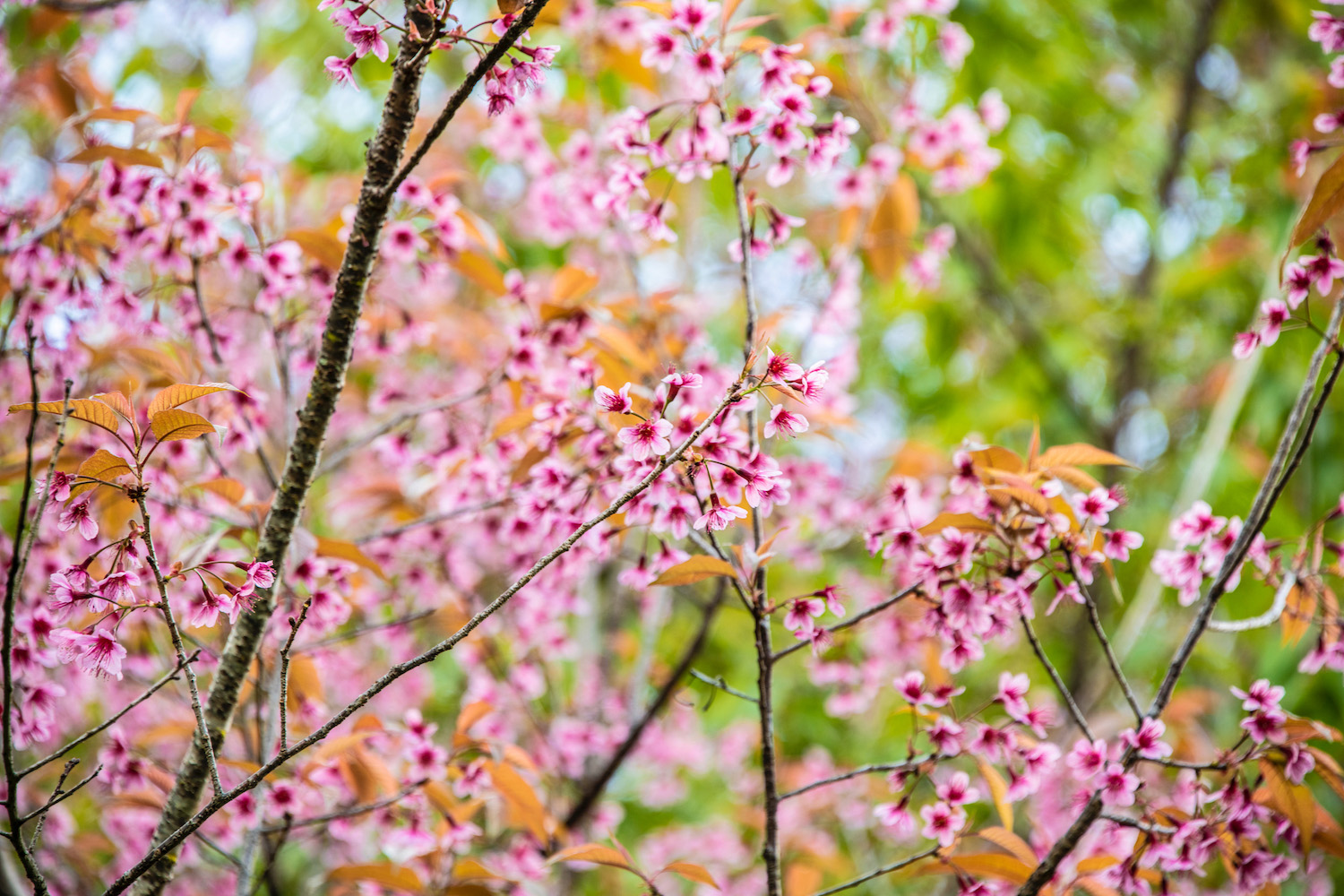
The taxi I rode to Chiang Mai airport was slightly nicer than the one that took me here from Lampang. This one, which I called using Grab on account of the short distance, had red leather seats and a much younger, much more talkative driver.
“Going to Bangkok?” he asked knowingly. “For business?”
I replied to him, in Thai, that the trip was for leisure. I no longer possess the vocabulary to explain the nuance of what I do for a living.
The streets were soaked with the rain that was supposed to have fallen 24 hours earlier—it was supposed to have ruined half my trip, but only ended up spoiling the final evening instead. My driver and I chattered about the rain, and the cool reprieve it gave the usually scorching city when it fell during these winters months.
“I love the rain,” he told me in Thai. “Very nice, very comfortable.”
I once again withheld the truth of how I felt, but not simply because I lacked the words to paint the whole picture. I wanted to let him enjoy his morning, even if under different circumstances, the source of his enjoyment would’ve ruined mine.
Other FAQ About Visiting Chiang Mai
Is Chiang Mai worth visiting?
Chiang Mai is worth visiting, but I wouldn’t do so with the expectation that it’s going to change your life. While the temples of the old city, the height of Doi Suthep and the many waterfalls around the city are charming, it also tends to be fully of tourists, and overpriced compared to the rest of Thailand.
Why do people love Chiang Mai?
People love Chiang Mai, in my opinion, more due to what it was than because of what it is. 20-30 years ago, Chiang Mai seemed like an undiscovered paradise of temples and jungles, and a gateway into “real” Thailand. These days, so many people have gotten that message that a new one is desperately needed.
Why should you avoid Chiang Mai?
I would avoid Chiang Mai if you have very high expectations that it will define northern Thailand for you, or if you’re a digital nomad who’s convinced enough by stories about it to move there sight-unseen. On the other hand, if you’re visiting Chiang Mai alongside other northern cities like Chiang Rai and Lampang, I think you’ll be much better set up for success.



